Automatic language translation
Our website uses an automatic service to translate our content into different languages. These translations should be used as a guide only. See our Accessibility page for further information.
Measuring trends in domestic and family violence (DFV) is important but challenging. While police data on DFV assaults (crime statistics) is easily accessible, it may not fully represent DFV trends in the community, as changes in reporting practices and proactive policing can influence these figures. On this page, we present data from five alternative DFV metrics. When viewed together, these metrics are considered to offer a more accurate reflection of DFV trends than recorded crime statistics alone. The measures include police records for two serious DFV offences, DFV related hospitalisations and self-reported incidents of violence from the annual ABS Crime Victimisation Survey.

Women and children who are murdered are most often killed by a family member or someone they have been in a domestic relationship with. Due to the severity of these crimes, murders in DFV situations are almost always detected and recorded by police. While these incidents occur less frequently than other forms of DFV, changes in the number of adult women and children murdered in such contexts offer a reliable measure of the prevalence of this type of violence.
Measure: Number of adult women and children murdered in DFV related circumstances.
Trend: The number of women and children murdered in DFV circumstances has been relatively stable in NSW between 2018 and 2024.
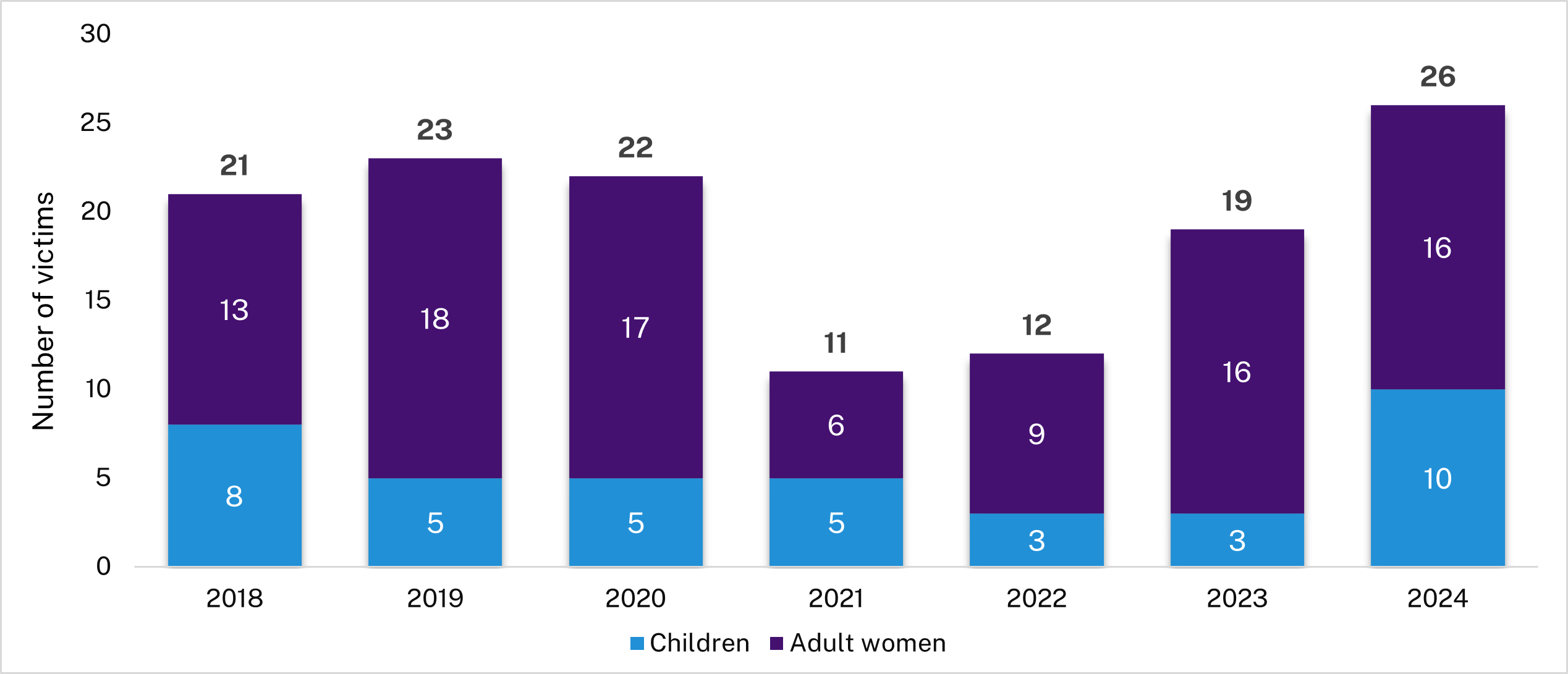
Source: Recorded by NSW Police
Resources: Domestic violence related murder in NSW (PDF, 293.8 KB)
In NSW, public hospitals routinely collect information on people hospitalised due to injuries inflicted by another person, including the nature of their relationship between the patient and the alleged perpetrator. Data on DFV related hospitalisations capture incidents of serious DFV related violence, independent of whether a report has been made to police about the incident. As a result, trends in hospitalisation data are less likely to be affected by shifts in people’s willingness to report DFV incidents to the police, unlike recorded crime statistics.
Measure: Hospitalisations for domestic and family violence-related interpersonal violence.
Trend: The rate of domestic and family violence-related interpersonal violence hospitalisations in NSW has been relatively stable between 2017/18 to 2023/24..
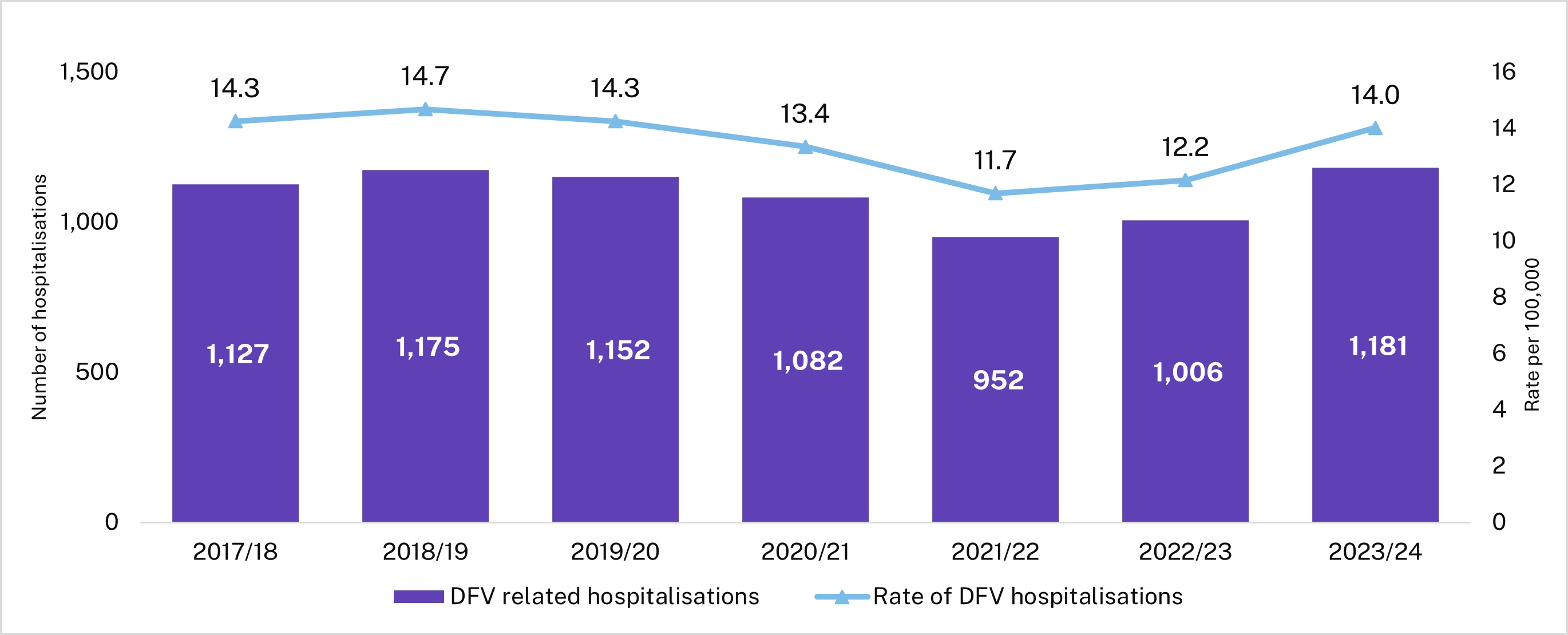
Source: NSW Health
Large-scale, routine, victimisation surveys that rely on self-reported experiences can provide insights into the nature and prevalence of violence in the community. The Crime Victimisation Survey, conducted annually across Australia, asks respondents about their experiences of violence and whether they report to police. Unlike routinely collected administrative data, self-reported victimisation surveys are independent of changes in the willingness of victims to seek assistance over time or changes to the way these incidents are recorded in administrative data.
Measure: Percentage of women aged 15+ who self-report experiencing physical, threatened or sexual violence in the previous year.
Trend: Self-reported violent victimisation by women in NSW did not change significantly from 2017/18 to 2023/24.
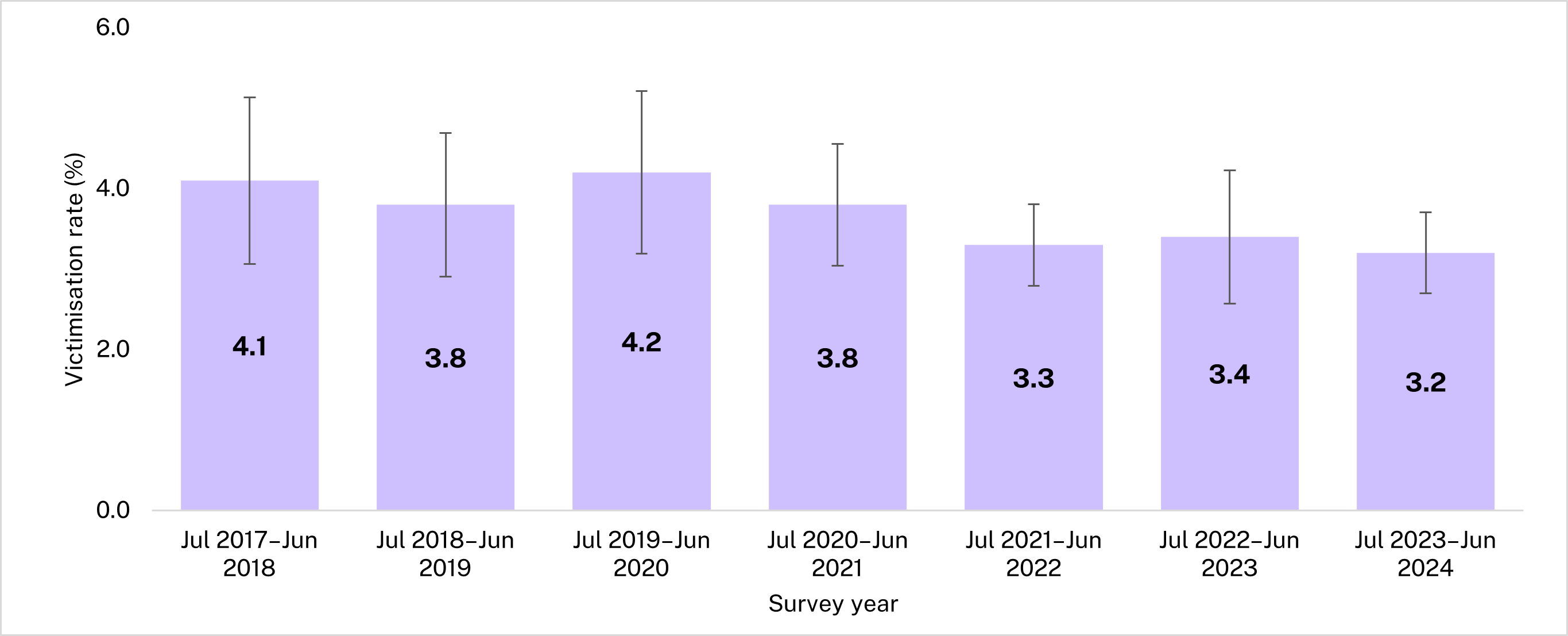
Source: ABS Crime Victimisation Survey
Resources: Trends in Self-Reported Violence Victimisation (PDF, 668.9 KB)
The ABS Crime Victimisation survey also asks respondents about their experience of violence in the past 12 months, including the nature of the violence and their relationship with the perpetrator for the most recent incident. Monitoring trends in self-reported experiences of violence in DFV circumstances helps track changes in DFV victimisation over time, independent of shifts in victims' willingness to seek help or changes in how these incidents are recorded in administrative data.
Measure: Percentage of people aged 15 + who self-report experiencing DFV related violence in the previous year. Data pooled over 3 years to improve reliability and detect change over time
Trend: Self-reported DFV victimisation in NSW had a significant but modest decline from 0.92% in July 2015-June 2018 to 0.72% in July 2021-June 2024.
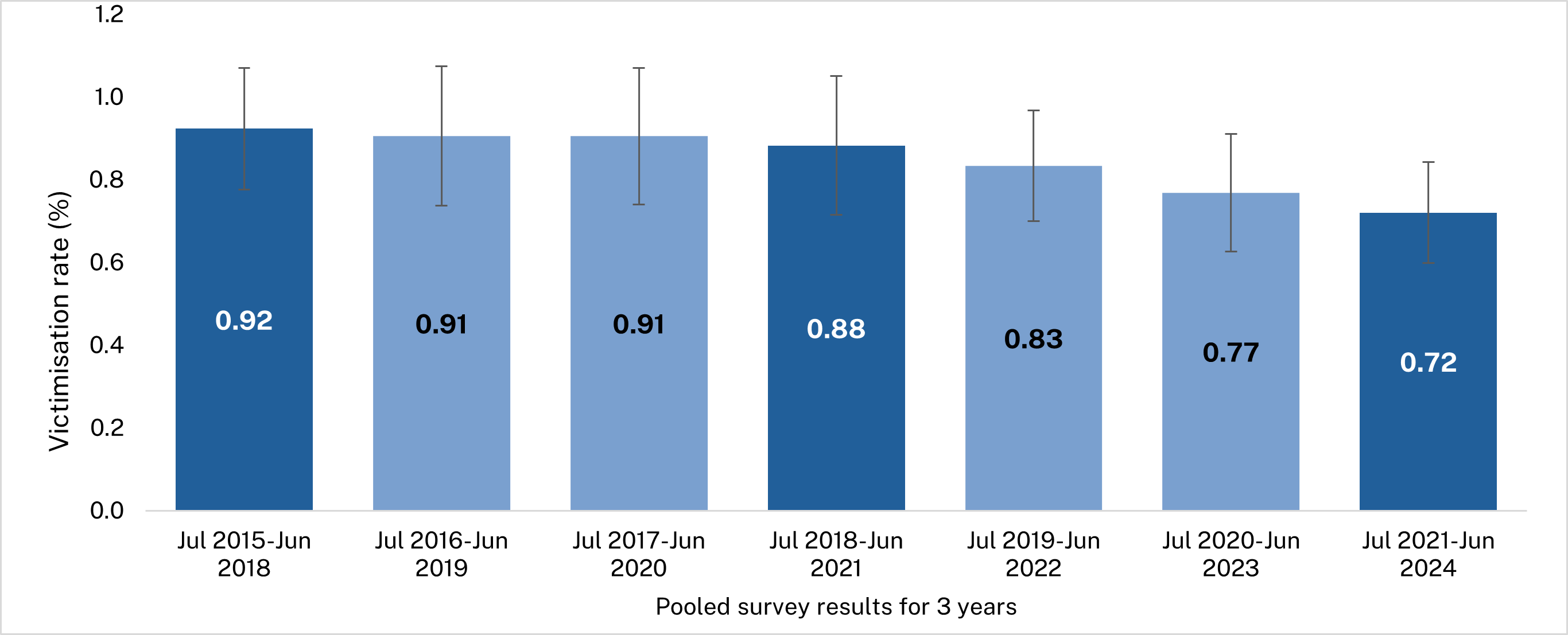
Source: ABS Crime Victimisation Survey
Resources: Trends in Self-Reported Violence Victimisation (PDF, 668.9 KB)
Grievous bodily harm is the most severe category of assault recorded by the NSW Police, this type of assault involves the infliction of significant injury. These injuries are typically severe and require medical attention. Due to the serious nature of such assaults, they are more likely to be reported to the police than common assaults, making them less susceptible to changes in reporting or recording practices.
Measure: Number of incidents of DV related grievous bodily harm recorded by the NSW Police.
Trend: Police recorded criminal incidents of DV related grievous bodily harm did not change significantly from 2018 to 2024.
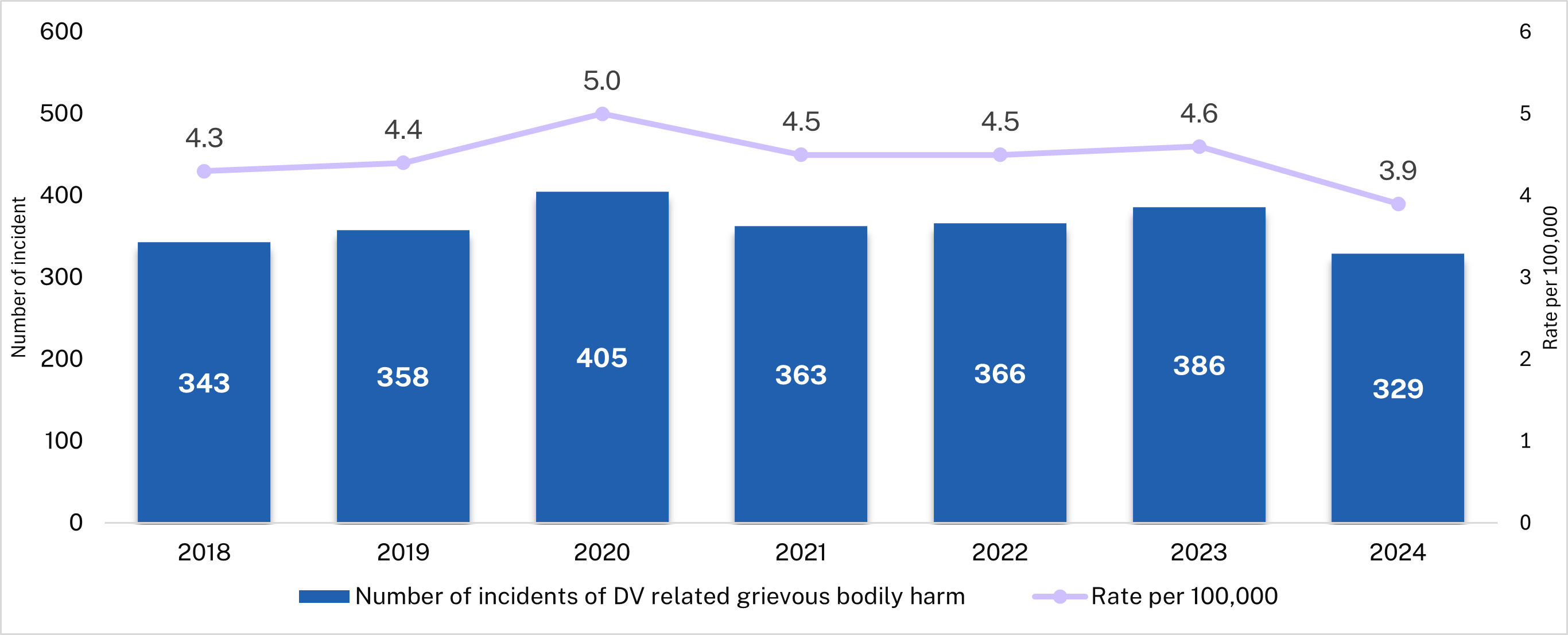
Source: Recorded by NSW Police
Read the comprehensive quarterly domestic and family violence report: Trends in domestic & family violence (PDF, 413.9 KB)
Last updated: